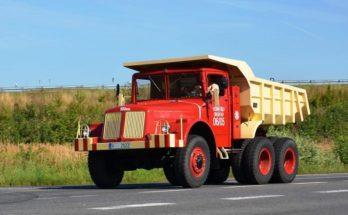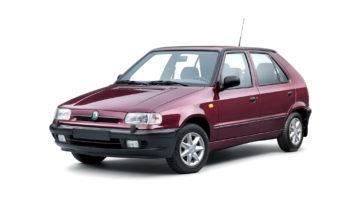Two great enthusiasts of motoring and especially motor sports from Pilsen, Václav Bervid and Karel Jílek, longed for their own workshop, where they could realize their ideas and modifications of cars and motorcycles. On January 1, 1969, they founded the company Metalex, which primarily dealt with the technology of protecting steel structures – the so-called metallization. Our top designer Václav Král has worked closely with Metalex since their beginnings, whose most famous joint work is the MTX Tatra V8, with which Metalex director Ing. In 1991, Petr Bold set a Czech speed record of 265 km/h. In total, Metalex, based in Mělník, produced more than 170 prototypes and modified versions, among which were both formula cars and offroad, special utility vehicles, convertibles or more sporty serial cars.
Since it's summer, even if it's rather rainy so far, we'll take a look at two beautiful youngtimers – convertibles that Metalex took for a spin. The first is the MTX Rapid – as the name suggests, it is based on the Skoda Rapid, and the second beauty above is the MTX Roadster based on the Skoda Favorit.
MTX Rapid
It was created at the instigation of a German importer who wanted to offer customers an "echt gut" version without a roof. It all happened in 1988, when the first prototype appeared thanks to Mr. Heinzinger's company (in the end there were 6 cars). There was nothing left but to entrust the production to someone, and that someone was Metalex. Although it was not the only open version of the Rapid, it was the most successful one from Metalex (although it was not designed, only manufactured).
Every convertible suffers from body stiffness, and it was no different with the Rapido. Due to the absence of window pillars or subframes behind the seats (similar to targa cars), the windshield pillars and especially the sills had to be reinforced. The rear end was raised by 6 cm, which definitely benefited the appearance compared to other versions of convertibles derived from the Rapid. The fabric roof was sewn here in Czechoslovakia, and because of its storage behind the rear seats, the rear backrests had to be adjusted. In addition, the front seats were placed two centimeters lower. The sewn-in windows could be either classic clear or tinted.
Otherwise, in terms of technology, not much has changed, the drive was still provided by the classic, notorious inline four-cylinder 742.136 with a volume of 1,289 cm 3 with an OHV distribution with an eight-channel aluminum head located behind the axle. It is actually an almost identical unit, which was taken over by Favorit with minimal design interventions. It produces 46 kW (64 hp) at 5,000 rpm and 100 Nm at 3,000 rpm. Thanks to this, the 900 kg convertible went from 0 to 100 km/h in 15 seconds. The handling remained very good, the precise and light rack steering with four-piston brakes at the front and especially the rear driven angled pendulum axle ensured a nice ride for its time. The gearbox was a classic five-speed with a constant ratio of 3.9:1. If desired, the car could be endowed with appropriate spoilers and stand on thirteen-inch Ronal alloy wheels.
It was unfortunate that such a "fancy" style "cabr" was not approved for operation on our roads. In the end, even the original idea of producing 40 pieces was not fulfilled, because only 12 pieces (+ 6 from Heinzinger) were produced, which makes it quite a unique collector's item.
MTX Roadster
The successor to the 105/120/130/135/136 series (including Garde and Rapid), the new and groundbreaking model for the Mladoboleslavská automobile company, the Favorit, also received an open version. In the end, Skoda's original intention to produce a three-room sedan and a sporty three-door coupe in addition to the classic Favorit hatchback and Forman station wagon did not happen, so Metalex came up with the idea of offering its own open two-seater sports car.
Its design was designed by Václav Král and the management of the development was entrusted to Ing. Ivan Solfronk. The developers paid particular attention to the rigidity of the body, which was even 62% stiffer in torsion than the classic Favorit. This was due to a completely redesigned rear part of the body, reinforced sills, floor, window frame and profiled sidewalls. Safety was enhanced by arched frames behind the seats with struts. Safety and rigidity were reflected in the weight, the Roadster was forty-five kilograms heavier than the series favorite, but this did not affect the driving characteristics. The modified radiator grille and new spoilers, together with a completely different rear end with a decent wing, had a sporty effect, and everything was crowned by beautiful cast fourteen-inch wheels. The external dimensions were the same as the Favorite except for the height (10.5 cm lower). The interior was basically standard, electric windows and central locking were a bonus, leather seats were optional. The canvas roof stretched over a folding roof section that was stored behind the rear seats.
The 781.135 unit is almost identical to the one in the Rapid, with the same cylinder head, but with straight pistons, the compression ratio is reduced to 8.8:1 (more suitable for burning unleaded low-octane Natural). It produces 43 kW (58 hp) at 5,000 rpm and the maximum torque value of 94 Nm peaks at 3,000 rpm. It started to 100 km/h in 15 seconds and went 150 km/h. Metalex also offered sportier engine modifications, for example a camshaft with sportier timing or a different carburetor. The already decent driving characteristics and stability of the Favorita for its time were supported by a slight lowering and spacer between the shock absorbers.
In total, over 150 cars were produced, the production of which ended in 1996 and was succeeded a year later by the Felicia MTX four-door convertible. Although roughly half of the Roadsters went abroad, they are currently coming back thanks to enthusiasts of the brand with a winged arrow in its emblem and of Czech cars in general.
We have here two Czech youngtimers without a roof. They already have a solid collector's value and definitely have something in them. Which would you choose?



